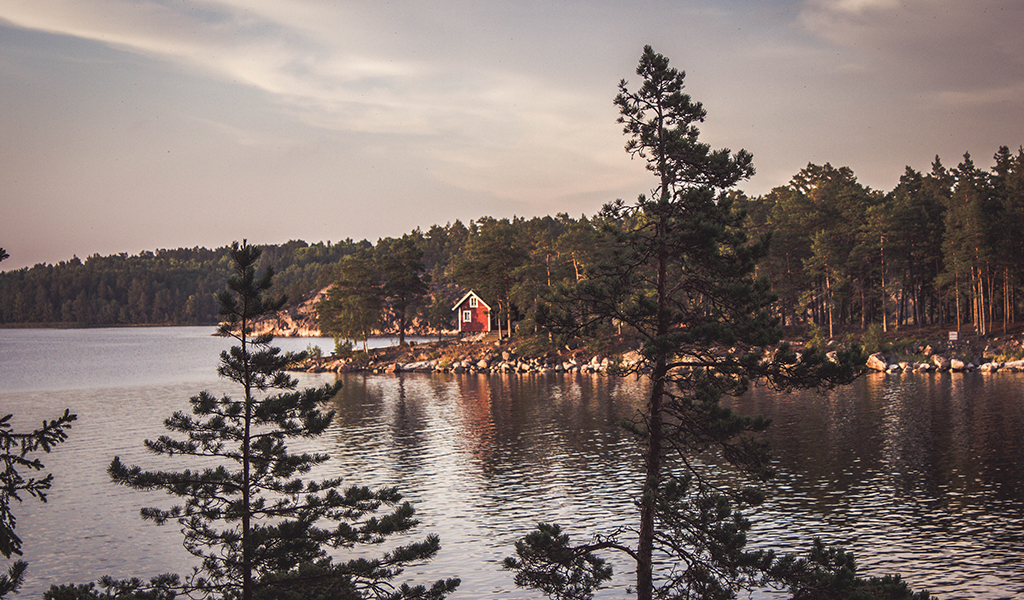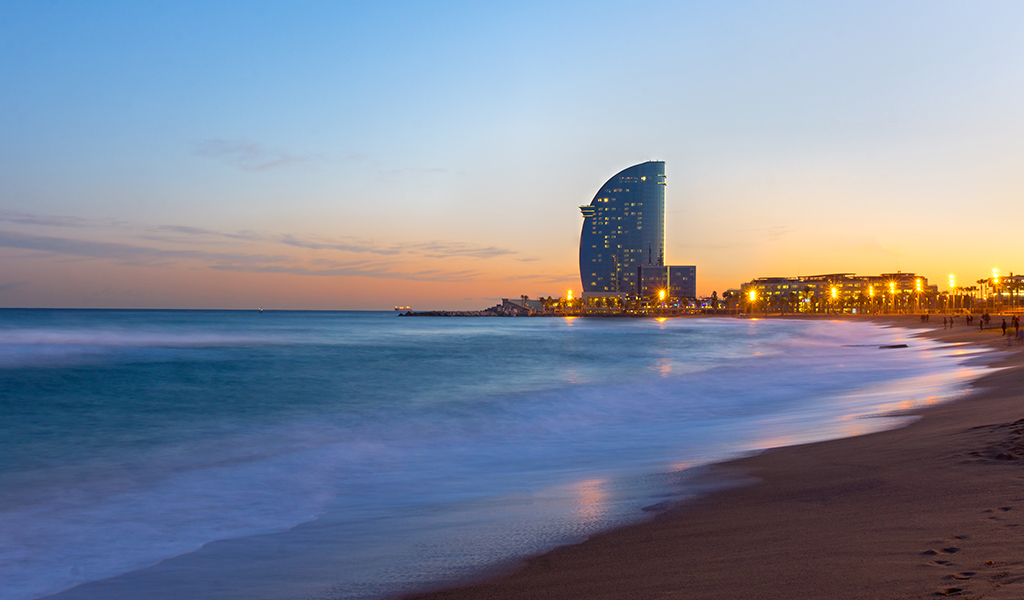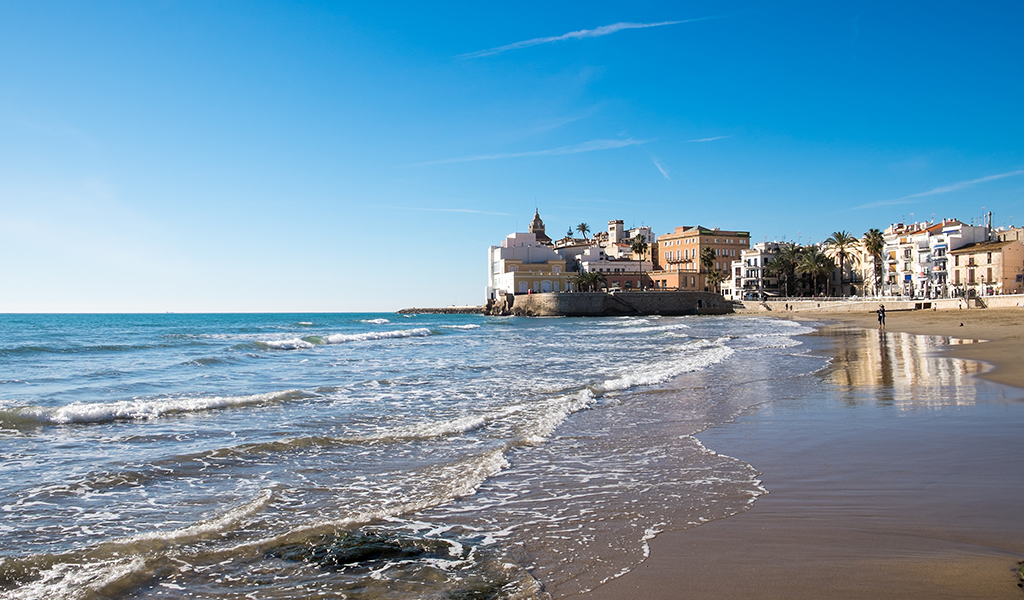2020 U.S. Election Would Have Different Results in Canada
see how the 2020 U.S. election would have panned out if Canada was voting
Published on November 16, 2020
How closely did you follow the 2020 U.S. election? This is a question we wanted to know at Caddle… and we found the answers!
As Canadians, our close ties with the U.S. cannot be disregarded. As such, here at Caddle, we want to know not only how many Canadians were following the election, but WHY.
2020 U.S. Election Results
After the announcement of Joe Biden winning the 2020 U.S. presidential election, Caddle put together a Rapid Response survey to our 10,000+ daily member panel to find out what Canadians think about the 2020 U.S. election.

Over 70% of Canadians Would Vote Joe Biden & Kamala Harris
Which U.S. presidential candidate would you have voted for?
Baby Boomers are the most in favour for Joe Biden when you look across generation cohorts, while Generation Z is most in favour of Donald Trump when compared to other generation groups.
Are you surprised by these results?

With the presidential elect decided, we also want to know consumers’ opinions on Canada & U.S. relations.
How dependent do you believe Canada should be on the U.S.?
What is your top concern in regards to Canada-U.S. relations over the next 4 years?
Get in touch below and we will send you Caddle’s full report on how Canadians really feel about the 2020 U.S. election.
Why you need to think about DIY in product innovation
When it comes to product innovation, people have always been interested in creating and developing products themselves. If you are a brand manager who is searching for a new market trend or product opportunity, look no further. According to technavio, the value of the DIY industry is estimated to climb to 13.1 billion by 2021. This is definitely not something you can just shrug your shoulders at! You should be extremely interested in leveraging and building DIY into your business strategy and I’m going to tell you the reasons why.
Do-it-yourself (DIY): The Research
In order for us to extract the most valuable insights and perspectives, we have to ask ourselves some stimulating questions. Why do consumers participate in DIY? What kind of DIY projects are they creating and consuming? Where do people get information about DIY? Considering these questions, we were able to propose the following hypothesis:
Consumers are shifting their focus from ready-made products and alternatively, they are creating/customizing their own.
Do-it-yourself (DIY): Survey Analysis
The survey results are outstanding. We did not expect to have so many DIY advocates using our program. Here are some of the high impact results that we obtained during our research. As you are reading, please keep the following details in mind:
- Respondents are predominately females – 80%
- Millennials and Gen X account for the majority of the responses – 81%
- Approximately 40% of respondents are located inside Ontario

Almost 50% of our members indicated that DIY projects allow them to express their creativity. This is an interesting finding on two levels.
First, you can empower your customers by providing them with access to DIY resources,
Second, by embracing DIY, your customers will feel a stronger connection to your brand.

Our members are going into 2020 feeling empowered to create products on their own terms! When it comes to DIY projects, people will often use platforms such as: Google, YouTube and Pinterest in order to watch and consume instructional content for product development.
For example, the graph provided below is the number of times someone has entered the key phrase “how to” into Google search, a common phrase that indicates someones intention to complete a task independently. As a brand manager, you want to communicate with your digital team and offer “tutorial” style videos to your consumers to encourage DIY using your products. This graph reinforces that DIY is not temporary, but for the last 15 years has experienced steady increases.

Do-it-yourself (DIY): DIY Trends
We decided to consult Google trends in order to identify correlations between our findings and the general search history online. We were able to find a consistent pattern in the DIY environment.
Based on the graph below it is evident that DIY search results peak in October for five consecutive years. When we asked out members on Caddle “what time of year do you prefer to create DIY projects?” we found that 45% said summer and fall. That being said, there are definitely some promising opportunities presenting themselves during Halloween.
If you are anything like us, you want to keep digging. Ask questions like, how can we increase DIY participation in the off season? Or, how does the DIY environment change based on time of year and are there any accessibility issues that may help bridge this gap?

Do-it-yourself (DIY): The DIY Difference
So why are people all about DIY?
Not only does DIY fulfill your need for a basic product or service, but it really provides the participant with a unique and intimate product experience. The ability to work within a strong DIY community is empowering – it requires you to challenge yourself both physically and intellectually.
As we identified in our surveys, DIY allows people to express their inner creativity. If you are able to provide customers with the ability to customize their products and have a stake in the process, you can begin to capitalize on this growing industry.
Do-it-yourself (DIY): Business Opportunities
Whether you are a business looking to tap into this market or someone who is trying to build a person brand and showcase your skills online, the following information will be extremely relevant. Consider the following tips.
Have a strong social media presence
Just being online doesn’t cut it anymore, there is a lot of noise in the DIY community. The DIY business model has become reliant upon video and image based applications (Pinterest, Instagram and YouTube). In order to truly showcase the importance of social media in DIY we asked our members the following question, “where do you typically get information about DIY?”
The response was 52% of our members are using social media to get information about DIY. If you are a digital manager this is right in your wheelhouse. Take this opportunity to make your presence known by leveraging all of the available platforms and create content that is both informative and aesthetically pleasing.
Our advice to you…start building your brand on Pinterest! A whopping 32% of respondents said they get their insights from Pinterest, prior to browsing other platforms. If you are having trouble building this content from scratch, browse social media influencers to get a good idea of the do’s and don’ts.

Buying DIY
So get this, DIY supporters are creating their own products, but they also express interest in buying other peoples projects. 40% of our survey respondents indicated that they are interested in purchasing other peoples DIY offerings.
This type of purchase is far more complex and unique that than the traditional shopping experience. DIY products offer more transparency, sellers are often inspired to showcase their personality, their story and their development process. In a digital age people are basically begging to feel a personal connection between the brands they are purchasing from. Obviously they need to see value in the product, but ultimately customers will choose to connect with brands that embody their values over others.
Supporting Sustainability
There are many different reasons why people participate in DIY and evidently environmental sustainability seems to have the biggest impact. Why is this? Well, DIY advocates pride themselves on their ability to not let anything go to waste!
NBC states that that search requests for sustainability on Pinterest are up 108% since 2018! Traditional manufacturing and mass production is messy and it often leads to excess amounts of waste and environmental damage. A Neilson study indicates that 42% of North Americans are willing to pay more for companies that champion sustainability and social responsibility.
Based on our findings we don’t see this trend to becoming to a halt anytime soon. Consumers, more than ever, are advocating for more transparency amongst brands and they are willing to abandon long time loyalty for better values. Companies and D2C brands that embody this mantra will have better success with the DIY demographic. If you need more evidence of these changes, feel free to check out of blog on plastic and sustainability.
More about us
Thanks for taking the time to read our blog post. If you want to get your hands on some more data just shoot us a message, we are happy to help. If this is your first time on our webpage, you might be wondering what we do.
Caddle is a data insights company that has a passion for understanding market trends. We collect, sort and analyze data in order to provide businesses with the upper hand against their competitors. You can certainly never know too much about your consumers.
We pride ourselves on having our finger on the pulse of Canadians and our 300,000 monthly user base helps do some of the talking. What are you waiting for, let’s work together!
Black Friday & Cyber Monday: Earn Money While Spending
The Exclusive Handbook for Canadians
Black Friday and Cyber Monday Canada
The long-awaited and long-anticipated Black Friday deals are just around the corner. We know that you are starting to gather some holiday gift ideas or maybe you are planning on treating yourself to some new electronics this year.
You are one of the many consumers who plan on participating in holiday shopping this year. According to CNBC, the average consumer is looking to spend at least $1300 this holiday shopping season!
In the past, Black Friday has definitely got out of control. We have all seen the YouTube clips of shoppers fighting over the last TV or bursting through the doors as stores open as early as 7:000 a.m. However, things are changing in the digital age, and this may be for the better.
Black Friday is beginning to face some new competition from its younger sibling, Cyber Monday, which is predicted to generate approximately 10 billion dollars in 2019. A healthy amount of competition may drive prices even lower.
We also see deals starting earlier and running later as the competitive climate begins to boil for Canadian retailers. Between Boxing day, Cyber Monday, and Black Friday your head might start to spin.
When is Black Friday and Cyber Monday in Canada?
Black Friday deals may have already been activated depending on the retailer and the type of product that you are searching for. The traditional date that is associated with this shopping holiday is November 29th. Usually, there are additional, exclusive promotions that are announced on this day.
Retailers such as Amazon, Best Buy, Walmart, Canadian Tire, Chapters, Costco and Ikea, are already promoting their Black Friday deals. According to Business Insider, in-store Black Friday discounts often outweigh the online offerings. It is also recommended that you purchase “big-ticket items” on Black Friday as opposed to Cyber Monday.
Black Friday Purchases
- TV’s
- Laptops
- Video game consoles
- Furniture and appliances
- Travel (hotels, flights, all-inclusive packages)

If at first you don’t succeed try, try again. If a product sells out, or you couldn’t make it to the store because of work, or you simply can’t justify the existing price, you have a second opportunity to get those items on your wish list.
Cyber Monday lasts 24 hours starting December 2nd and has been deemed as the best time to purchase tech products, especially niche gadgets. Some of the early discounts that have already been released are listed below.
Cyber Monday Purchases
- Wireless earphones
- Smart speakers, watches, and appliances
- Security systems
- Phones and tablets
- Clothing and accessories

Black Friday and Cyber Monday: Caddle Members
In order for us to give you the best advice and deals at Caddle we wanted to know how you plan on purchasing your products this holiday shopping season.
We conducted two surveys 1) Black Friday and 2) Cyber Monday, to see if our members are going to take advantage of the huge savings. The average number of respondents was 8,350 and the majority of the members ranged between the ages of 27 and 36.
Member Responses
Black Friday:
- 68% of members are interested in participating and shopping on Black Friday
- 56% of members are going to use their credit card to make purchases
- When asked if Black Friday was better than Cyber Monday over half of the members felt neutral (indifferent)
Cyber Monday:
- 57% are interested in Cyber Monday and 32% of members plan on participating
- 66% of members make purchases online
- 35% stated that they are going to browse the deals
- 45% of our members feel that online shopping is safe and secure

Consider these two tips:
- If you are paying with a credit card make sure you are receiving cash back or travel rewards points. Make money while spending money.
- If you are making online purchases ensure that your payment method is secured, keep a record of your transaction number, and see what fraud policy your bank offers.
Black Friday & Cyber Monday: Price Matching
Trust me, I’m not talking about that person at the grocery store who says “I know I have a coupon for that somewhere”. Price matching has become easier than ever with the help of our smartphones!
Most stores are beginning to offer a low price match guarantee in order to keep your business and decrease the number of product returns. Not to mention the accessibility of receipt uploading, browsing digital store flyers, creating a digital wish list or shopping cart, viewing promotions, registering for email lists, and coupon apps (yours truly, Caddle) that are all available at the touch of a button.
Institutions such as Meridian Credit Union have also implemented a new system called price drop. You upload your receipt and the app will notify you about any price adjustments and deposit the difference right into your bank account.
Black Friday & Cyber Monday: Online Versus In-Store
So you might be wondering, what platform is going to offer the best deals. The fact of the matter is that it’s actually quite subjective and product-specific. An article by Time Trade indicates that:
“The bottom line is customers value the personal experience of the physical store,” said Gary Ambrosino, CEO of TimeTrade. “We found that shoppers have done their shopping or discovery online, then go into the store to get help with their final purchase decision.”
Some products are just better to purchase in-store, especially when it comes to customizable products. Let’s be honest, when you purchase a tech gadget online you know what you’re going to get, the equipment is relatively standardized.
On the other hand, if you are purchasing a mattress you probably want to test out the comfort level, look at the size, and ask some specific questions.
If you do purchase online just make sure that you are able to return the product if it doesn’t satisfy your needs. Some retailers will charge you an additional shipping expense when you return the product, so it’s important to keep that in mind.
Lastly, there is no exact formula that determines which method leads to more cost savings but shopping online does have its perks. It will certainly provide you with more product selection, increased availability, and convenient shipping.
Get a Competitive Edge
Now that you are fully informed about Cyber Monday and Black Friday here are some tips to stay up to date with the deals:
- Subscribe to email newsletters
- Abandon your cart
- Look for updates on social media
- Use coupon apps
- Read the reviews

About Caddle
Thanks for reading our blog post! If this is your first time on our webpage you may be wondering who we are and what we do?
Caddle is a data insights company that has a passion for understanding market trends which can be translated to the market industry leaders for the benefit of understanding the buying behaviours of their consumers.
Click this link to find out more and earn some cash back from our surveys!
[simple-author-box]
Plastic Straws: Canada’s Plastic Ban Explained
Why Canada is banning plastic straws. Here’s what to use instead
When it comes to plastic straws, Canada is taking action.
On June 10, 2019, Prime Minister Justin Trudeau announced the government’s intention to ban plastic straws, bags and all other single-use plastics by early 2021 in efforts to reduce non-recyclable waste.
The Prime Minister stated that, “Canadians know first-hand the impacts of plastic pollution, and are tired of seeing their beaches, parks, streets and shorelines littered with plastic waste”.
On top of this, several companies in Canada have also pledged to ban plastic straws in their facilities—including coffee chain Starbucks, which will eliminate all plastic straws from its stores worldwide by 2020.
While experts suggest the straws themselves only make up a tiny fraction of plastic in our oceans and coastlines, the plan marks the start of concerted effort to reduce our dependence on single-use plastic.
Here’s what you need to know.
How has Canada responded to Trudeau’s proposed plastic ban?
The response hasn’t been all sunshine and rainbows. And if you’re good at understanding both sides of the story, you might be able to understand why.
From an economic standpoint, this ban has the potential to hurt small businesses. To investigate this potential roadblock, the Canadian Federation of Independent Business has called for an assessment to see how this ban might affect small businesses.
For First Nations groups, this ban also proposes an issue as they rely heavily on plastic water bottles so they can get the fresh water they need.
Why are plastic straws bad for the environment?
Plastic straws negatively impact the planet in two key ways: Since they aren’t biodegradable they build up in oceans, coastlines and landfills. Secondly, the plastic itself releases chemicals into the environment that harms plant and animal life.
You might remember the glory days of plastic straws: sipping on an ice-cold soda on a hot Summer’s day without a care in the world. But what happened after you threw them away? Plastic straws made their way into our landfills and oceans.
All those refreshing sodas and all those straws led to a huge accumulation of plastic. In fact, plastic straws have made the top-ten list of items collected during beach cleanups. Scuba divers have even found great amounts of plastic dwelling under the sea. But, the negative effects of plastic straws impact our land just as much as our oceans. Plastic straws are not biodegradable.
To make matters worse, over time, the straws break into smaller particles, releasing harmful chemicals and toxins that pollute the soil, air and water—harmful to plants, animals and people alike.
Millions of turtles, whales and other marine wildlife die each year from ingesting plastic or being exposed to its harmful toxins.
The problem in Canada
Plastic straws contribute to the problems we face here in Canada and plastic straws are part of that. In total, over 10,000 tonnes of plastics enter the Great Lakes each year.
Of course, that isn’t all straws, but as a country, we use 57 million plastic straw each year. In the past 25 years, nearly 800,000 volunteers have removed over 1.3 million kilograms of trash from across Canada’s shorelines. The most commonly littered items were single-use plastic products
Are plastic straws recyclable?
Unfortunately not. Most of the plastic straws that you will encounter at fast food chains or grocery stores are polypropylene or polyethylene. The problem is that polypropylene is classified as a type 5 plastic—and unfortunately, most recycling facilities do not accept type 5 plastic.
But it isn’t just the type of plastic that causes problems. Let’s say you’ve found out that your local recycling facility does accept type 5 plastic—problem solved, right? Plastic straws are too small and they fall through the conveyor belts, which means they are discarded due to lack of cleanliness and quality of plastic. Also, if the plastic straw is dyed black, it will not be accepted whatsoever because it has reached the end of its life cycle and is no longer a high-quality plastic.
In Canada only about 10 percent of plastic gets recycled, but that percentage is likely to be almost zero for straws.
There’s no winning when it comes to recycling plastic straws.
Doing your part: Alternatives to using plastic straws
Plastic straws have an average usage time of twenty minutes before we discard them – a trivial lifespan for something that will remain on the planet forever. There are plenty of great options to replace plastic straws and ensure that you’re doing your part to combat waste. Some plastic straw alternatives include:
- Paper straws
- Steel or metal straws
- Hard plastic (think twisty, colourful, reusable straws)
- Bamboo straws
- Silicone straws
- No straw (take a sip straight from the glass)
We highly recommend checking out Plastic Alternatives: 10 Easy Options to Start Using Right Now for a more in-depth look at plastic straw alternatives.
It looks like humanity is kicking plastic straws to the curb once and for all. Take the time to explore a viable straw alternative and keep on reducing, reusing and recycling.
Everything you need to know about Mahtay Café & Lounge
Meet the owner of Mahtay Café & Lounge Chris Lowes
If you’re from the Niagara region–St. Catharines in particular– you’ve no doubt been to (or at least heard about) Mahtay Café and Lounge. Located on St. Paul Street, this coffee shop has been in business for about eight years now and there is just something about it that makes you coming back for more (sorry Tim Hortons).
Like ourselves, we often take time out of our busy schedules to walk down the street to grab a cup of coffee from Mahtay. That’s just how it works in St. Catharines culture. Everyone is very tight-knit with the community and looks to support local businesses.
But this trip to the coffee shop was different. We wanted to know more about Mahtay. We had the chance to sit down with the owner of Mahtay, Chris Lowes, over a cup of coffee as the subject matter expert himself discussed everything there is to know about Mahtay and the coffee industry.

How do you stay current in the industry?
When you’re in the food and restaurant industry you really have to stay current– coffee shops especially. We really pay attention to food trends and staying current with trade shows and industry magazines. People are always interested in what’s new and healthy. So in this particular moment, we’re doing a purple yam latte — an ube (Ouu-bay).
Social issues are also really important to us, so it’s important staying on top of that as well. A lot of that comes from having staff that are savvy. I think this really allows for us to tap into our community.
What is this purple latte you mentioned?
It’s exactly what it sounds like, it’s a purple latte– ube, which is made out of purple yams. It is very popular in Malaysia and has a ton of health benefits. But with this month [September], being a purple month with the Grape and Wine festival, we wanted to tap into the community by doing something creative with that.

What encouraged you to get into the coffee industry?
I come from a construction background, but I always enjoyed the romance style of a cafe. Creative culture always spoke to me and that’s the same environment I wanted to create here.
I’m a very “go-go” kind of person, so the times that I’ve been on vacation have really been the only times when I’ve had the chance to experience cafe life. So that’s why it was always the romance of, “oh remember when went here and hung out at this cafe and people watched?”
So that’s where the inspiration came from. Not so much when I’m at home because I have a wife, kids and a 150-year-old home that demands a lot of attention. So places we experienced all around the world like Brooklyn, the Carolinas and the incredible coffee culture in Europe certainly drew my attention to cafe life.
That’s why we don’t have TV’s in our shop. You can get that someplace else; there are lots of coffee shops that do that really well. But we wanted to create a space where creatives can gather around, talk, eat, and get away from the outside world for a bit.
Is there anything that has encouraged change since you’ve started?
I wouldn’t say that it’s more systematic than what it is symptomatic. When there’s something that needs to be addressed then we’ll do it.
When we first started I would come in on a Sunday and no one would be around, but I told my daughters that if I needed them they would have to jump in. But now that’s totally different. In the fall and winter time, Sundays are our busiest day of the week. So that certainly dictates necessary change.
But on the other hand, we’re always pretty driven so we’re always looking for innovation, new ideas and opportunities.
Recently we bought a coffee trailer which will be our next thing that will allow us to go to events and sell coffee. We’ve been asked to do a lot of corporate events or events at wineries, but not having a mobile unit can be a pain in the neck. So if we have something that is all set with everything you need, all you have to do is pull [the trailer] and drop it off.
From food to coffee, how do you come up with new products?
Everyone here is really bought into what we’re doing. So we’re drawing on our community and our staff to create new things.
They’re always saying, “hey I saw this and we should try that, but what if we did it this way instead?”
Some ideas are more difficult than others but a lot of the time we’ll be open to it an putting our own spin on it.
We tried this one particular drink [ube latte] someplace else so we thought, “hey that’s pretty good why don’t we try that out and make it incorporate something else into it?”. So that’s how the [ube latte] in particular came about.
But demand and always wanting to try and be innovative definitely plays a large role in what we do around here.
How do you look for validation in the products you sell?
That’s a good question, actually.
Customer feedback is always a big one. We have a very chatty staff so that helps us figure out what people like and what they don’t like. So on an anecdotal level that helps us get validation on what products are working and what isn’t.
But of course, sales dictate a lot as well too. If something is still selling strong, we’re of course going to keep it on the menu.
Where does the name Mahtay come from?
Okay, so it’s a phonetic pronunciation of the word “Yerba Mate” (ur-ba mah-tay) which is a South American tea.
When we were first opening up business we really wanted to distinguish ourselves from other coffee shops and Yerba Mate represented what we wanted Mahtay to be about.
[Yerba] Mate is a communal drink that you traditionally put loose leaf in a gord they call a guampa. Then you get a perforated straw called a bombilla. Then you pour hot water in [the gord], you drink it, and then you pass in on to the next person in which they do the same. It keeps getting passed around and often it’s used in a community and the end of the day with family or friends.
That was what we were trying to do with Mahtay. We wanted to connect with the community and we thought this drink really represented that well.
[simple-author-box]
Singapore weather, tourist attractions and vacation tips
Travel Singapore
From the time you touch down in Singapore, you’ll notice a few things – first, take in the simply stunning Marina Bay skyline, then head out on the town for shopping, food and any number of attractions. This immaculately clean city marries nature with beautiful, innovative architecture. You can often find public parks among city lights and skyscrapers. The City in a Garden is also culturally rich, and has grown into a favourite destination for foodies and lovers of high-end fashion.
These factors have made Singapore a notoriously expensive country to visit, but don’t let sticker shock dissuade you – with our tips for when to go, where to stay and how save on essentials like flights, transportation, food and attractions, you’ll discover plenty of ways to shave costs.
Geography, population and more
Located in the continent of Asia, Singapore does not share land borders with any countries, and has a population of 5.6 million people. You might be surprised to discover the country is an economic powerhouse; it’s seaport is one of the busiest in the world and Singapore has grown to become a major worldwide banking, shipbuilding and petroleum centre.
“Within the last few decades, this melting pot of cultures has moved onto the ‘A List’ for international travelers, and is today one of the most sophisticated tourist destinations on the planet,” declares World Atlas.
Fact: Singapore is currently the only island-city-country in the world, and is slightly smaller than the city of Lexington, Kentucky in the United States.

Currency and budget
Singapore uses the Singapore Dollar (SGD) and most places will offer fair exchange rates, notes Will Fly for Food, a travel blog for the gastronomically inclined written by JB & Renée. For the best exchange rate, they recommend heading to Mustafa Foreign Exchange at Mustafa Centre in Little India, which is open 24/7. You can also check their other recommended money changers or go to an ATM. When we checked in late April 2019, the Singapore Dollar was close to par with the Canadian Dollar.
As for how much cash to take out, The Blonde Abroad says to plan on spending a minimum of $50 to $60 USD ($67 to $80 CDN) per day to cover getting around town, meal costs and inexpensive accommodations. Want to step up your accommodations or spend a little more on entertainment? Plan for $85 to $100 USD ($114 to $134 CDN) per day.
Budget your Trip, which publishes average travel costs for thousands of cities around the world provided by other travelers, was slightly more conservative, estimating average daily cost per person per day at $44 US ($59 CDN) if traveling on a cheap budget. According to the website, a couple could spend a week in The Lion City of Southeast Asia for just over $600 USD ($800+ CDN). The site also breaks down accommodation, food, entertainment and other expenses.
You can also take a look at Detourista’s Singapore trip + itinerary guide for first-timers.
ATMs
If you are going to withdraw cash from an ATM, this requires a little planning ahead – let your bank know since they may have to activate your card for overseas use. Will Fly for Food warns to never proceed “with conversion” if asked by an ATM machine – this would authorize the foreign bank to do the conversion instead of your local bank, meaning you may get a terrible exchange rate.
TripSavvy offers some great tips on how to change and use money in Singapore.

How to save
Skip the Singapore Tourist Pass
TripSavvy recommends skipping the Singapore Tourist Pass unless you absolutely love riding trains around the city. Although the pass is similar to the EZ-Link card that will save you money, you will probably not get enough value out of it to justify the cost. The Tourist Pass gets you unlimited rides over a one, two, or three-day stay and cost S$10 plus an additional S$10 that’s refunded after you return the card. This means you’d need to ride the MRT 4 to 5 times per day to break even.
If you’re more likely to spend your time seeing the sights, shopping and enjoying the entertainment, skip this one
.
Don’t commit fine-able offences
Don’t get caught on the wrong side of the law in Singapore, or you could end up in serious legal or financial trouble for seemingly innocuous offences, such as annoying someone with a musical instrument (fine: not exceeding $1,000), connecting to someone else’s wi-fi network (carries a penalty of up to 3 years in jail or a fine of $10,000), leaving a toilet unflushed ($150 fine), or others. For more details, see Unique and often misunderstood laws in Singapore by The Culture Trip.
When to go and how long to stay
The first thing to know about travel seasons in Singapore is that unlike other destinations, the country doesn’t have a definable high and low season, although you’ll want to avoid the peak travel times of November through early January, June and July, when winter travelers, holiday festivals and business traffic bring the most crowds, says hotel expert Santorini Dave. He suggests booking your trip for April, since there are no public holidays and it doesn’t fall during monsoon season.
Tip: Avoid the Northeast monsoon season, which can bring moderate to heavy rain from December through early March. Southwest monsoon season occasionally brings “Sumatra Squalls” with high winds from June through September. – Meteorological Service Singapore
Singapore Weather
If you like warm weather, Singapore is the place for you – though heat and humidity are a year-round issue in this tropical climate, it’s not as bad as, say, Thailand, where summer temps can reach 110 degrees Fahrenheit, as noted by Adventure in You.
Here, temperatures stay within a rough range of 75 to 88 degrees Fahrenheit year-round. If you’re looking to travel on a budget, avoid big holidays like the Chinese New Year, when prices may spike.

Where to stay
If you’re looking to rest on a budget, The Pinay Solo Backpacker recommends staying at hostels near MRT Stations such as Quarters Capsule Hostel and Blissful Loft, since they’re convenient for exploring and eating at hawker stalls. Book your accommodations at hostels/guesthouses in advance online and take advantage of discounts. Popular places to stay include Bugis, Chinatown, Little India, Lavender Street and Clark Quay (Riverside).
You’ll find mid-range accommodations around the north bank of Singapore River, Bras Basah Road (near Fort Canning Park) and Rochor Road. Higher end hotels are located on Marina Bay, Promenade Orchard Road and Sentosa Island.
The Broke Backpacker has a great list of recommendations for where to stay based on your budget and what you’d like to do, from experiencing Singapore’s legendary nightlife scene in Clarke Quay to combining the old with the new in Chinatown and indulging in some quality family time in Sentosa.
Passport and safety issues
Your regular Canadian passport must be valid for at least 6 months beyond the date you expect to leave Singapore. This requirement also applies if you’re traveling through Singapore to neighbouring countries. Tourist visas are not required for stays of up to 30 days, says the Government of Canada. See travel GC for more details on entry and exit requirements.
Safety
The Government of Canada advises taking normal security precautions in Singapore. Practice special health precautions to avoid becoming infected with the Zika virus. If you’re pregnant, you should avoid traveling to Singapore.

Flights and transportation
Compare flight costs and set up price alerts on sites like cheapflights.ca, Google Flights, Kayak, and Skyscanner that let you compare the cost of flights over multiple time periods.
You’ll likely fly into Changi Airport, located about 20 kilometres from Singapore’s business district. It serves as the home base for world-class Singapore Airlines and budget carriers like Tigerair and Scoot, notes Skyscanner. Travelers from Canada often book connections through American or Asian cities and fly with airlines like Cathay Pacific, Lufthansa and Air Canada.
This international gateway is one of southeast Asia’s largest transportation hubs with more than 4 terminals housing an incredible array of shops, services, theatres, gardens and more, says I am Aileen, a travel blog written by digital nomad, travel writer and vlogger Aileen Adalid. She has some great suggestions for what to do during a flight layover, breaking them down into activities inside and outside the airport.
Tip: Stay in the airport if you have 6 hours or less of Singapore layover time. – I am Aileen
Public transportation
Buses
Getting around Singapore by bus or train is easy. The country’s bus system is shared by 2 main operators both offering similar services, SBS Transit and SMRT, and takes travelers throughout the island, says Lonely Planet. You can find bus fares ranging from S$1 to S$2.10 (or for less with your EZ-Link card). Have exact change ready when you board the bus as drivers don’t offer change, or tap your EZ-Link card to the reader whenever you get on and off.
Trains
SMRT or MRT operates trains and runs a late-night bus service between the city and suburbs – jump on for a flat rate of S$4.50 per journey if you’re out between 11:30 p.m. and 4:35 a.m. on Fridays, Saturdays and the night before public holidays.
Visit Singapore highly recommends the MRT, as it’s your fastest way to get around the city and the extensive rail network will take you within walking distance of most of the country’s key attractions. If you intend to use MRT and basic bus services frequently while you’re here, buying a Singapore Tourist Pass would make sense.
Visit SBS Transit’s and SMRT’s websites for more information and route details. You can also download the SG Buses smartphone app to keep track of bus arrivals in real time.
Skip taxis; take private cars instead
Although they’re comfortable to ride in and move faster than other forms of public transport, you may want to skip flagging a taxi for other forms of public transport depending on your budget, says The Culture Trip. This is because your ride can quickly become expensive, especially when they cross gentries (ERPs), which are a form of road tax. Use them only when necessary; if you’re in a rush, not sure where your destination is located or when you can’t reach it by bus or train. Booking in advance costs more but guarantees you a ride.
A better option is to hire a private car – useful for when you’re out long past the hours when public transportation is available. Download the Grab app or the Ryde app to book one. Price changes according to time and distance.

Where to eat
Along with France and Italy, Singapore is another destination for food lovers. Whether you’re craving exotic cuisine or an authentic local meal, you can find it all here. On a budget? Drop into food halls and hawker street stalls, bustling with people and serving everything from tangy appetizers to spicy dishes, delectable desserts and everything in between, promises Travel Triangle.
Nomadic Matt suggests heading to the stalls on Smith Street particularly, as they offer food for less than S$6 and are a great place to munch on local snacks. If you’ve got a particular hankering for Chinese or Asian, you’re in luck – you can usually find it for about S$8 to S$9 per meal. He also recommends Singaporean seafood. Dining at casual restaurants will cost you around S$20. Going grocery shopping? Expect a week worth of groceries including pasta, vegetables, chicken and other basics to run you about S$75.
Tip: The Singapore Sling – the quintessential ‘Singaporean drink’ was invented here and is a must-try during your trip! Head to the iconic Raffles Hotel to savour this pretty cherry-pink cocktail. – The Culture Trip
What to do
Take a walk along Marina Bay Waterfront Promenade
Similar to San Francisco, New York and other world-class destinations, Singapore’s unforgettable waterfront offers awe-inspiring views and a way to cool off for free. The promenade’s mist will give you much-needed relief from the blazing heat, you can take a breather in breeze shelters equipped with motion sensor fans, and of course, pause to take in an incredible panorama of glitzy skyscrapers and architectural buildings. This is also a fantastic way to get a close-up view of the bay and see free outdoor performances, says TheBestSingapore.com.
Shop ’til you drop on Orchard Road
Singapore is another fashion mecca, and you’ll want to hit Orchard Road if you’re looking to shop while you’re in the country. With 22 markets and 6 commercial centres in the district, there are some excellent malls you shouldn’t miss that sell everything from affordable bargains to luxury brands. If you’re looking to snag some deals, head to 313 @ Somerset Mall, which holds international fashion stores and countless eateries. Known for its young, lively atmosphere and affordable options, 313 @ Somerset also often features live events such as fashion shows, live music and more. For more ideas, see Living Nomads’ 10 best Orchard Road Singapore shopping malls you should not miss .

Look to the stars
Looking for a unique date night idea or some quality time with your brood? Slow down and bask in the wonder of an evening spent stargazing at Science Centre Singapore, which offers free stargazing every Friday (weather permitting) between January and November from 7:45 p.m. to 10 p.m.. There’s limited space, so you’ll want to arrive by 7:30 to claim your spot, advises Nomadic Matt, who wrote a great list of 18 free and cheap things to do in Singapore. Check the Science Centre’s website for most up-to-date details.
Don’t forget to tell us about your experience! Have you ever traveled to Singapore, or are you planning to book a trip? What are your best tips when it comes to saving for vacations? We’d love to hear what you’ve planned, or any tips we’ve missed. Share your story in the comments and tell us what destinations are on your wish list. Our team love saving for holidays and we hope to inspire our members with exciting suggestions to spend your Caddle money.
Festivals, Flights and Northern lights - what to consider on Sweden time
Travel Sweden
One of the first things you’ll notice about Sweden is that it’s a study in contrasts; you can spend days exploring the rolling countryside before venturing into Södermalm, where you’ll find vintage shops, trendy restaurants and shopping galore. Its stunning landscapes and picturesque villages offer distinct architectural wonders, and the transportation system is one of the best in the world.
While Sweden is known for being difficult to travel on a budget, we’ve tracked down some tips that’ll help you keep more kronas in your wallet, until you make it back.
Geography, population and more
Sweden is located in Northern Europe southwest of Finland and shares the Scandinavian Peninsula with Norway. Ten million people reside in one of the largest countries in Europe. The country is known for its high quality of life, beautiful cities and its love of coffee, pop music and minimalist design. The capital city of Stockholm is regarded as one of the most beautiful cities in the world.
Sweden’s vast landscape ranges from mountains and forests in the north to lowlands in the east and highlands to the west and south. While Swedish is the official language, you also might meet people who speak Finnish, Meänkieli, Sami, Romani, or Yiddish.

Currency and budget
The Swedish krona is the country’s official currency, but beware the cash-free movement; according to Culture Trip, Sweden is leading the cash-free movement, with many Swedes eschewing notes and coins for cards, citing security, convenience and speed.
You’ll find many cafes, restaurants, attractions and even public toilets do not accept cash. Instead, many are looking to apps like Swish, which lets you pay people or businesses with only their phone number or unique business code. You’ll have the ability to split bills, borrow money or share a tab.
As for how many kronas you should bring with you, Budget Your Trip, which provides average travel costs for thousands of cities all over the world as submitted by other travelers, gives cost breakdowns for everything from food and accommodation to local transportation and entertainment for both budget and mid-range trips. At the budget level, expect to spend about 472 SEK per person per day (about $66 CAD) and 1,167 per person per day ($165 CAD) for a mid-range trip.
Plan your visit for August or September
Late August and September are most affordable, because flights and hotels are cheapest during off season. WorldTrips advises signing up for alerts on travel deals sites like Expedia so you can keep an eye on prices and get the best deal.
Tip: You’ll feel the warmest temps from June through August. The stunning Midnight Sun reveals itself from May to July, while the unforgettable Northern Lights colour the sky from September through March.

Book an Airbnb or bunk at a hostel
Similar to other destinations, Airbnb, Couchsurfing and HostelWorld are favourites here. While Airbnbs often come with a kitchen (allowing you to save money by shopping at the market and eating in), you can save even more money and enjoy a more authentic experience by using Couchsurfing to connect with locals renting space in their homes.
WorldTrips says an average dorm bed at a hostel will cost you between 220 and 450 SEK (about $30 to $64 CAD) per night. Again, many offer a free breakfast, fully functional kitchen, and are a few minutes walk from downtown. Airbnb rates vary dramatically depending on location and amenities, but expect to pay at least 209 SEK (about $30 CAD).
Passport and safety issues
Because Sweden is a Schengen country, Canadian citizens don’t need a visa to travel here, but watch how long you stay; visa-free travel only applies to stays of up to 90 days in any 180-day period (this information can change any time, so always check with Canada’s foreign diplomatic missions and consulates).
If you’re using a regular Canadian passport, it must be valid for at least three months beyond the date you expect to leave the Schengen area. Learn more about passports, visas travel advice and advisories for any country at travel.gc.
Safety
The Government of Canada cautions Canadians to watch out for petty crimes like pickpocketing and purse snatching in urban areas during the summer months. These areas include:
- Stockholm’s Old Town
- The Central Station
- Restaurants
- On public transportation
Always secure your personal belongings, passport and other travel documents. The Government also says gang and organized crime-related violence happens in the three largest cities, including Stockholm, Gothenburg and Malmö. Fortunately, these have not typically happened in tourist areas, but always be vigilant.
Similar to many international destinations, terrorism is also a threat and targets could include public areas, tourist attractions, restaurants, shopping centres, airports and other transportation hubs. Always stay aware of your surroundings and watch for warnings on the Government of Sweden’s public alert system.

Get deals on budget airlines
When it comes to transportation in and around Sweden, you’re in luck; the country has several large and small airports, and a famously robust transportation hub.
Flights and airports
Flying into Sweden, you’re likely to land in one of the larger airports:
- Stockholm-Arlanda Airport
- Göteborg Landvetter Airport
- Stockholm-Skavsta Airport
- Stockholm-Bromma Airport
- Malmö Airport
- Luleå Airport
- Umeå Airport
Budget airlines are on the rise, so it’s easier to reduce the cost of what’s traditionally one of your largest travel expenses. Travel website Matador Network suggests looking into Ryanair, Easyjet and WOW Air to fly into smaller Swedish airports at cheap prices; Copenhagen’s Kastrup airport is a half-hour train ride from Malmö, the country’s third-largest city. Check baggage weight limits to avoid extra fees.
Sign up for alerts on price aggregators like Skyscanner and Google Flights to find the best times to buy.
Take the train or bus
Good news: Sweden boasts extensive rail and bus networks to help you get around the country easily.
One of the first things you’ll want to do is purchase an Interrail (for European residents) or Eurail pass (for non-European residents). The SJ trainline service releases tickets in March, June, September/October and December. Watch during these times and you’ll likely be able to nab some cheap fares if you book far enough in advance (or want to chance trying to get a last-minute ticket), says The Local Sweden.
Looking to take a short trip? Hop on a Swebus, the country’s largest express bus travel provider. Similar to the train, you’ll want to book online in advance and avoid traveling Fridays and Sundays – the busiest travel days. You’ll also find tickets at Swebus stores and retailers like 7-Eleven, says Smarter Travel. If you’re traveling afar, Eurolines connects Sweden with 25 other countries.
Visit ResRobot.se to look at bus routes and download a handy smartphone app.
Tip: In Stockholm, you can get an SL 24-hour access card for 125 SEK (less if you’re under 20), which lets you travel anywhere in the county on the commuter train, bus or metro. – The Local Sweden.
The major cities of Stockholm, Gothenburg and Malmö are all walkable, too.
Bonus: You might try a ferry if you’re visiting Gotland (Sweden’s largest island). Many ferry companies, including Tallink Silja and Viking, offer passenger travel routes from Stockholm to other countries in the Baltic Sea. Smarter Travel points out that one-way ticket prices are often cheaper than round trips.

Eat street-side, shop at food markets
The key to eating on a budget in Sweden is knowing where to go, since prices can vary significantly, points out As We Travel, which suggests looking for restaurants out of the main city centres of Stockholm, Gothenburg or Malmö.
Looking for a taste of Swedish culture? Check out a gatukök (street kitchen). Essentially, these are small street side hot dog huts that serve cheap fast food – think Swedish meatballs, the “halv special” sausage, and more.
Routes North, an independent travel guide covering Sweden, Denmark and Norway, dropped an ingenious tip to eat for cheap: Check out any of the restaurants that run cheap lunch deals to attract business types. Menus are similar to their evening fare, so it’s a low-risk chance to try that delicious Swedish dish you’ve been eyeing.
You can also meet a few locals during “afterwork” hours, held at bars and restaurants in most larger towns. Simply get yourself a beer or glass of wine, and dine on a sizeable buffet for free. Although you’ll get a tiny plate, you can always go back for more.
Of course, you can always meet locals, experience a country’s authentic culture and find some of the best food at a local food market. TripSavvy mentions Östermalms Saluhall food market as one of the best. Expect to see everything from butchers, cheesemongers, bakers to cafes and sandwich shops in one mouth-watering, tightly packed space.
Tip: Picking up a bottle of wine to open with dinner? Your only legal option in Sweden is Systembolaget, one of about 400 state-run liquor stores where you can buy stronger alcohol. You can still purchase alcoholic drinks in restaurants and bars. – Sweden.se.
Celebrate, stroll the city and explore nature
From the busy city centre of Stockholm to the tranquility of Sweden’s national parks and awe-inspiring views of the Northern Lights, there’s much to see all over the country. Here are just some unforgettable sites and experiences.

Discover Stockholm
Sweden’s capital city is a study in contrasts, from its historic old town to its young districts, captivating city centre, museums and cultural hot spots. Among favourites are Gamla Stan, one of Europe’s medieval centres. Prepare to be stunned by gabled shops and warehouses, award-winning restaurants, museums, cafes and cobblestone lanes.
Tip: You’ll want to get yourself a Stockholm Pass, which gives you free entry to over 60 attractions and use of the hop-on hop-off bus and boat tours.
The Crazy Tourist has a great list of the 25 best things to do in Stockholm.
Check out free sites
Some of the most interesting sites in Sweden are free, from free exhibits and museums to botanical gardens and parks. Matador Network suggests a self-guided walking tour or free guided walking tour to catch any sites you may have missed in your travels.
Experience festivals and celebrations
Hoping to learn more about Sweden? Visit one of the country’s many festivals, from Valborg (where you’ll enjoy dancing and socializing around a huge bonfire) in April to Midsummer – a famous Swedish celebration – in June and medieval week on the island of Gotland, there’s something for everyone. There are even crayfish parties, where locals eat crayfish, drink schnapps and wear silly hats. Learn more over on Swedish Nomad.
Take in Liseberg
Whether you’ve got the kids with you or are looking for a more romantic outing, head to Liseberg, where you’ll find one of Europe’s leading amusement parks, entertainment options like The Liseberg Theatre (Lisebergsteatern). There are also gardens, a sculpture park and in the winter, an Icebar, says Visit Sweden.
Visiting between Mid-November and December 23? You can stroll among Liseberg’s 5 million famous Christmas fairy lights and visit the huge annual Christmas market if you visit in December.

Explore Sweden’s national parks
Once you’ve got your fill of Sweden’s city life, you might be looking for an escape to nature. Sweden’s national parks have you covered, from the peaceful Muddus (said to be the quietest place in all of Sweden) with a waterfall and marshland to the Baltic seascape in Skuleskogen and the snow-capped mountains and incredible wildlife at Abisko, the most visited national park in the country.
Start planning your hiking trip – see Touropia’s list of the 10 most beautiful national parks in Sweden.
Catch the aurora borealis (Northern Lights)
Seeing the Northern Lights is an awe-inspiring experience that’s sure to be a highlight of your trip if you’re traveling between December and March (when you’re most likely to see them due to there being more darkness than light). You’ll want to head to the region of Lapland, and don’t hesitate to pack extra layers to keep warm in the frigid cold, batteries and of course, your camera.
Space Tourism Guide has a comprehensive guide to the Northern Lights in Sweden.
From Sweden’s famous architecture and museums to the bustling city of Liseberg and the tranquility of its national parks, this country has a lot to offer travellers, whether you’re honeymooning, bringing your brood or crossing the globe with friends. While Sweden is well-known for being costly to travel, there are also many free sites, exhibits and wonders to see if you’re willing to compromise on when you go, cook a few meals yourself and take advantage of the country’s robust public transportation system.
Don’t forget to tell us about your experience! Have you ever traveled to Sweden, or are you planning to book a trip? What are your best tips when it comes to saving for vacations? We’d love to hear what you’ve planned, or any tips we’ve missed. Share your story in the comments and tell us what destinations are on your wish list. Our team love saving for holidays and we hope to inspire our members with exciting suggestions to spend your Caddle money.
All the information you need to plan the trip to Spain you'll love
Travel Spain
Spain is a country of proud history and vibrant culture, stunning mountainous and coastline landscapes, bustling cities and hundreds of charming towns and villages.
Best known for producing some of the world’s best artists, extraordinary Islamic architecture, the Roman ruins scattered around the country and so much more, it’s no wonder Spain attracted 81.8 million tourists in 2017 (second only to France with 86.9 million), according to UNWTO, the World Tourism Organization.
If that wasn’t enough, you’ll marvel at the coastline snaking along the country’s picturesque beaches and stand in wonder in the monumental cathedrals – tributes to the Catholicism and spirituality the country’s inhabitants hold dear. Of course, there’s also the diverse nightlife, notes Lonely Planet in its comprehensive guide to everything Spain.
While Spain is another destination known for being a challenge to travel on a budget, we’ve got some tips to help you save some euros.

Geography, population and more
Spain is located in Southwestern Europe and occupies most of the Iberian Peninsula. 46.7 million people live in Europe’s third largest country, which is dotted with mountain ranges, including the Meseta Plateau that slopes down into neighbouring Portugal, the Cordillera Betica, Sierra Nevada and many more.
Along the coast, you’ll find countless bays and coves, most with sandy beaches. The Bay of Biscay is to the northwest, sporting rugged cliffs on the coastline. The Strait of Gibraltar separates Spain and Europe from Morocco (Africa).
Currency and budget
Spain uses euros (TripSavvy notes that Spain has used the euro since 2002, when it replaced the old peseta.)
As with many destinations, your costs can easily balloon if you’re travelling to popular cities like Barcelona and Madrid, but considering smaller locations like Seville, Valencia or rural communities is a good way to keep expenses in line, says travel blogger Nomadic Matt, who broke down a suggested daily budget for backpackers, mid-range and luxury travelers. While backpackers can expect to pay 50 to 60 EUR (about $76 to $91 CDN) per day for a hostel bed, cash to pick up food to cook their own meals (or having a few cheap meals out), entertainment, admission to some attractions and local transportation, a mid-range budget can run about twice that amount.
For 85 to 115 EUR a day (about $129 to $175 CDN), you could get a private room at a hostel or budget hotel, eat out frequently, take high speed trains and have enough left over for nights out, activities and even private tours.
Budget Your Trip, which publishes average travel costs for thousands of cities around the world, has budget breakdowns for trips of different time frames and expenses, including accommodation, transportation, tips and more. Young Adventuress dives deep with a budget breakdown for 30+ Spanish cities.
Tip: The easiest way to get euros in Spain is to use an ATM, which are more convenient than traveler’s checks and offer a better exchange rate than a bureau de change. Opt to be charged in euros and take out as much as you’ll need for a few days. – TripSavvy

When to go
Spain is a vibrant place to visit year-round, but if you’re hoping to keep costs down you’ll want to go during the spring (March to May) or in the fall (September to November), when you’ll encounter fewer crowds, cheaper accommodations and the best beach weather. Expect temps to fall in the 70s to 80s in the spring and in the 60s to 70s during the fall, says TripSavvy.
Where to stay
You’ve got a wide variety of choices when it comes to accommodations in Spain – enough that you can stay away from hotels, which are priced fairly steep, notes Transitions Abroad, a guide to travel, work study and living abroad with purpose. Instead, look into hostales, pensiones, and casas rurales for budget-conscious, comfy places to bunk.
Short-term apartment rentals, camping, and room renting are a few more solid budget choices. If you’re traveling with a family or in a small group, getting yourself a week-long apartment rental may be the way to go (expect to pay about €70 or about $106 CDN a night and up).
Note that some Spanish cities have confronted over-tourism by moving to drastically curb the Airbnb and homeshare listings available. Different restrictions will apply depending on which area of the city the apartments are located – the more central (such as Madrid, Valencia and Mallorca), the more rules.
Still, you can find a range of Airbnb accommodations in Spain for different locations and price ranges.
Tip: Hostales are not hostels. In Spain, hostales are like bed and breakfasts, usually small family-run establishments with shared bathrooms.

Passport and safety issues
Because Spain is a Schengen country, Canadian citizens don’t need a visa to travel here, but watch how long you stay; visa-free travel only applies to stays of up to 90 days in any 180-day period. Stays are cumulative and include visits to any Schengen country (this information can change any time, so always check with Canada’s foreign diplomatic missions and consulates).
If you’re using a regular Canadian passport, it must be valid for at least three months beyond the date you expect to leave the Schengen area. Learn more about passports and visas at travel.gc.ca.
Safety
The perennial warnings to be aware of your surroundings, keep your belongings and baggage close, lock your doors when traveling by car and to avoid unlit areas apply here. The Government of Canada cautions that petty crime such as pickpocketing and purse snatching is common, and most prevalent in larger cities during holidays, festivals and weekends, thieves are especially active in crowded public areas.
Madrid and Barcelona are high-risk cities for thieves. The Government of Canada lists a few locations specifically.
Madrid
- the Puera del Sol area and surrounding streett
- Gran Via
- Plaza Mayor, near the Prado Museum
- the Atocha train station
- Retiro Park
- the subway system
Barcelona
- the airport and on the airport shuttle bus (the Aerobus)
- on Las Ramblas (often in Internet cafes)in Plaza Cataluña, Plaza Reial and surrounding streets of the old city
- on the subway
- Barceloneta beach
- at Sagrada Familia church
- at the Sants train and bus station
Similar to many international destinations, terrorism is also a threat and targets could include public areas, tourist attractions, restaurants, shopping centres, markets, hotels, airports and other transportation hubs. Always stay aware of your surroundings and watch for warnings on the Government of Spain’s public alert system.

Flights and transportation
Flying into Spain, you’re likely to land in one of the country’s busiest airports:
- Adolfo Suárez Madrid-Barajas – Madrid
- Barcelona El Prat Airport – Barcelona
- Palma de Mallorca Airport – Palma de Mallorca
- Málaga-Costa Del Sol Airport – Málaga
- Alicante-Elche Airport – Alicante
Don’t wait to get a last-minute deal if you’re looking to save on flights – book months in advance, especially if using a budget airline, advises TripSavvy. Budget airlines may only cater to European countries, but you can still find a cheap flight to Europe and take a budget airline from there – just beware of extra costs. Flying transatlantic? Find the best prices about three months before you visit.
Madrid and Barcelona are your best options for connections as they’re both well-served by national and discount airlines, including Iberia and Air Europa. They offer daily flights to almost every corner of the country, says SmarterTravel.

Public transportation
Much like other parts of Europe, Spain has a robust public transportation network to connect its major cities throughout the country. Hop on a modern metro, use a speed rail or get yourself a multi-journey ticket.
Metros are underground railway systems and you’ll find them in major cities like Madrid, Barcelona, Bilbao, Malaga, Seville and Valencia, mentions Expatica, a site for expats around the world looking to turn their new country into their home. Ticket and pass prices vary – check Expatica’s comprehensive guide for details.
Culture Trip recommends hopping on a long-distance bus (some even come with individual televisions on the seat backs). Book in advance with companies like ALSA to get the best prices.
You can also buy a weekly travel card pass to save a significant amount of dollars. Bonus: No need to search your pockets for change when you take the metro or bus.
One of the most popular car sharing companies in Spain is BlaBlaCar – a big hit with locals and affordable. Prices for Madrid to Barcelona averaged around €30 (about 46 CDN) at the time of this writing.
Another quick and convenient option in Barcelona and other cities is to take the tram (El Tram). It’s a good idea to buy a T10 Integration ticket (€10.20) for the metro, bus and trams, which will allow you to take 10 trips on either system and can be purchased for various zones. If you’re sticking to Barcelona, get yourself a ticket for that city, or the Barcelona Card. Of course, you can also purchase a single ticket (€2.20) from ticket machines at each stop. The T10 can also be purchased at ticket machines as well as metro stations and tobacco shops (tabacs), says barcelona-tourist-guide.com.

Where to eat
The city of Seville has countless tapas bars, but there are some you should avoid for their tourist trap reputations – specifically the ones with photos of dishes pasted near the front door, or any with a large menu translated into English and other languages. Conversely, travel blogger Ben Holbrook, who writes Driftwood Journals, says he tends to go for the “dingiest, diviest looking places,” specifically recommending Bar Julio, often overlooked by tourists since it has “no menu, no sign, no English and, typically, no customer service.”
Of course, there’s no better way to live like a Spaniard than to visit a local food market, and Spain has them in droves. Madrid Food Tour recommends visiting first thing in the morning, as stalls close for lunch and asking for the best fruit of the day depending on the season.
Tip: To order at a food market stall, take a numbered ticket and order product in kilos (1 kilo = about 2.2 pounds). Be respectful – don’t touch the products or take pictures without asking, but do buy something. – Madrid Food Tour After you’re done shopping, stick around, enjoy a beer and do some people-watching.
Food Markets
As for which markets to visit specifically, The Lemon Tree has a great list of must-visit food markets in Madrid, including Mercado de San Miguel, which sells everything from fresh fruit to sangrias and homemade sweets in a historic glass building, and Mercado de Ildefonso, a hip, modern and chic foodie paradise that features and annual summer street food festival, serving the best of international cuisine.
In Santiago de Compostela, try Abastos market for the incredible seafood. Bilbao’s Mercado de la Ribera is the largest indoor market in Europe and a beautiful place to explore. Pick up fresh meats, fish cheeses and produce. See The Culture Trip’s list of the 10 best food markets in Spain.
On another day, visit Sant Antoni, a food lover’s district in Barcelona. Once home to the working class during the Industrial Revolution, it now boasts a laid-back atmosphere and an amazing range of restaurants showcasing the best of Catalan gastronomy, notes Barcelona Eat Local, a food tour travel blog.
Head to Barna Brew, a craft beer brew pub for delicious suds and dishes (note: did you know there’s a craft brewing revolution happening in Barcelona? Don’t miss out – kick back with some of the city’s best craft beers), or Ca l´Isidre, a family restaurant combining traditional Mediterranean with farm to fork cuisine. Pepa Tomate Parlament and Jonny Aldana are both great places for tapas (bonus: Jonna Aldana’s menu is vegetarian and vegan-friendly). Barcelona Eat Local has a few more solid recommendations, too.

What to do
Spend a weekend in Barcelona
You really need at least a couple of days, ideally more, to discover this mecca of art, architecture and food. From Musee Picasso (the Picasso museum devoted to the famous Spanish painter) to La Sagrada Familia (a renowned an enormous cathedral) to strolling the beach at Passeig de Colom in Port Vell to take in a beautiful sunset, you’ll immerse yourself in the city’s beauty. Short Holidays and Getaways has a few fantastic ideas for how to spend a weekend in Barcelona.
Experience the San Fermín Festival and Running of the Bulls in Pamploma
Looking for an adrenaline rush? The Blonde Abroad raves about the Running of the Bulls (Encierro) during the San Fermín Festival in Spain in July. The Running of the Bulls takes place on the second day of Spain’s largest festival, which includes nine days of festivities.
That day, get to the main street early (around 7 a.m. to be safe). You can watch from a (safe!) bird’s eye view for a great first experience. The rush you’ll get lasts much longer than the run itself, which only spans four or five minutes.
See some of the best fireworks displays anywhere every night during the festival at 11 p.m., when the entire sky above the ancient Citadel of Pamploma is lit up for almost 30 minutes.
Explore Grenada
The country is famous for its ancient history and architecture and Granada is no different. Nomadic Matt notes the city is still heavily influenced by its Moorish Roots (it dates back to the Moors and Romans thousands of years ago). Here you’ll find an astounding array of museums, monuments and statues worth exploring. He also recommends taking a bike ride along the scenic countryside of the outskirts.
Don’t forget to tell us about your experience! Have you ever traveled to Spain, or are you planning to book a trip? What are your best tips when it comes to saving for vacations? We’d love to hear what you’ve planned, or any tips we’ve missed. Share your story in the comments and tell us what destinations are on your wish list. Our team love saving for holidays and we hope to inspire our members with exciting suggestions to spend your Caddle money.

Savings Goals: Team member Whitney
Ever have a bit of extra cash you’re not sure what to do with yet? Why not keep it in a favourite spot at home until you’ve spotted your next gotta-have item?
That’s exactly what Whitney Gillen, our chief marketing officer at Caddle, does with her dough that isn’t earmarked for anything specific – she has a pot where she stashes her “rainy day” fund.

“It could be used for a new pair of shoes that catch my eye, an outfit that brings me joy or a decorative item for my house. I’m also saving for home renovations (bathroom, kitchen).”
Tip: Got a dull room in your house that’s begging for some rejuvenation, but not a large budget? Perk up the space with vibrant hits of colour like green. Look for low-cost items like area rugs, art, dishes, plants and more. – Real Simple

